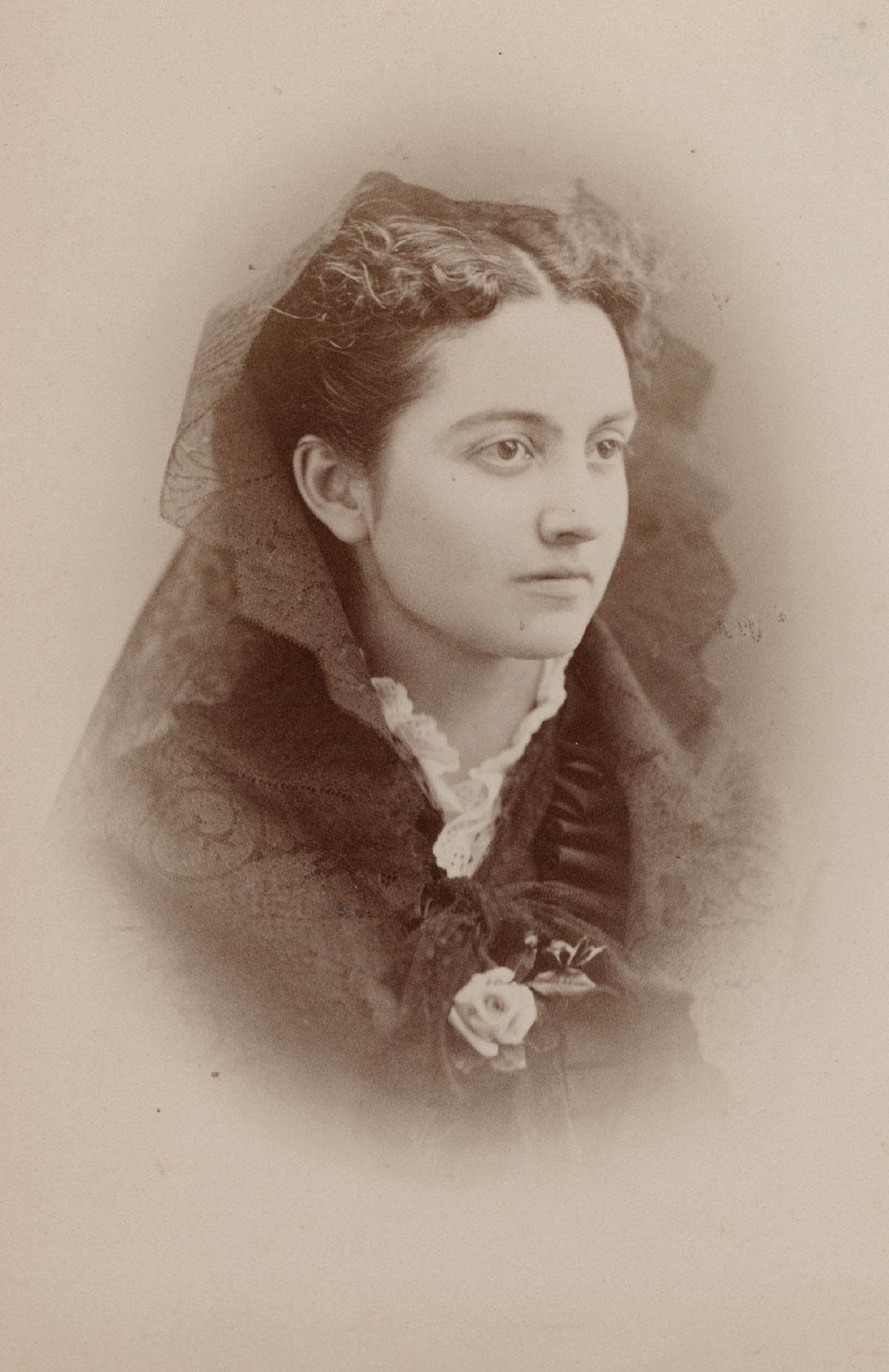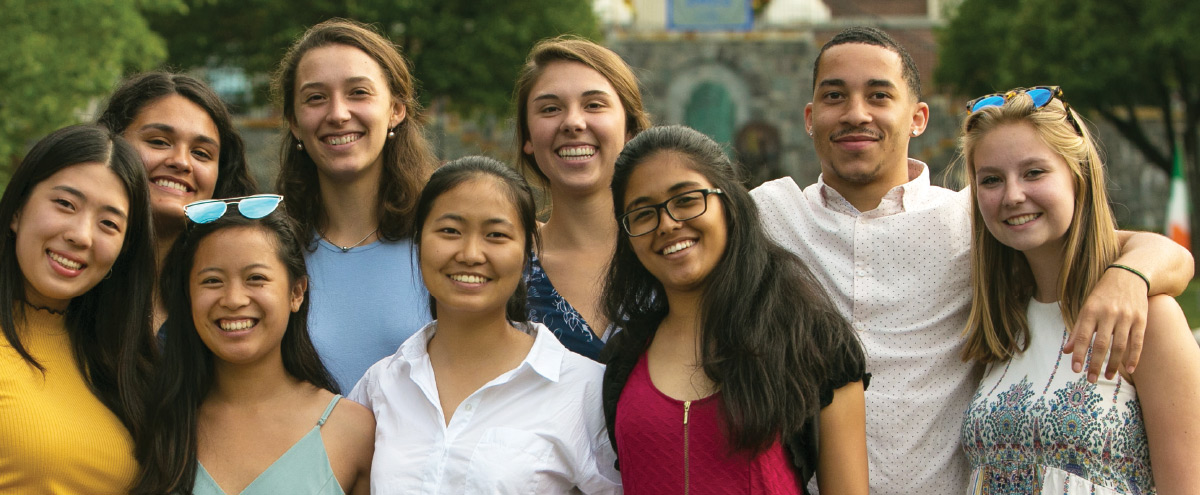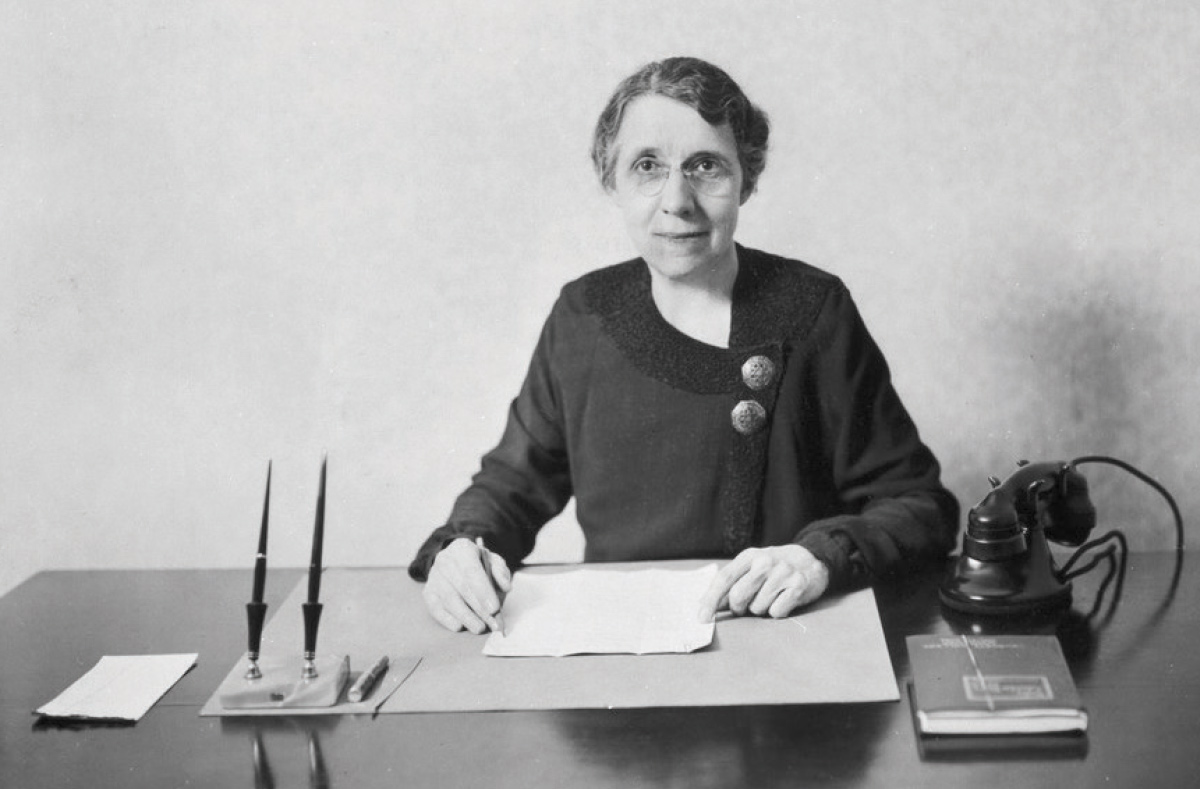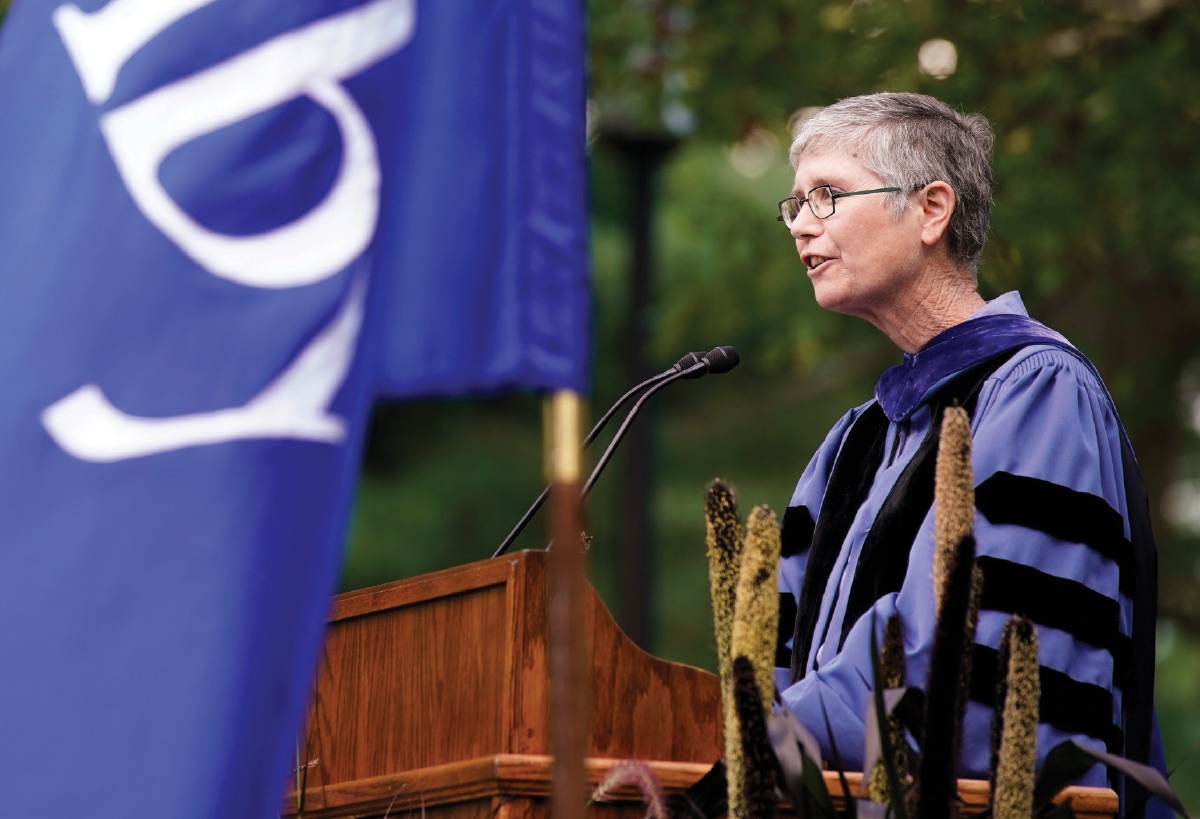
Courtesy of Special Collections & Archives, Colby College Libraries
First
There Was
One.
There Was
Colby’s Board of Trustees adopted the policy of admitting women in August 1871. The following month, Colby’s first female student arrived: Mary Caffrey Low.
“It was a piece of fine idealism, an independent step of large moral implications,” Low later said of the decision to admit women. “In the light of later events, one might call it a valiant adventure, a splendid hazard.”
With Low setting a pioneering course, the spirit of “valiant adventure” continues today at Colby, where the process of expanding women’s representation is active and ongoing among the ranks of students, faculty, and staff, as well as among the College leadership and the board.
Today, women students outnumber men on campus—and have nearly every fall since 1989. With few exceptions, there have been more first-year female students than male students since then, and for the Class of 2025, 54 percent of students identify as female.
Mary Anna Sawtelle was Colby’s first female faculty member, joining in 1896 to teach French. Today, among the College’s 260 tenure-track full, associate, and assistant professors, the gender split is 50-50. Notably, departments traditionally dominated by men, such as Computer Science and Economics, today have several women faculty, thanks in part to the efforts of staff like Provost and Dean of Faculty Margaret McFadden.
McFadden, who was named provost by President David A. Greene in 2017 after serving as associate provost, remembers going through the faculty directory when she joined Colby as an assistant professor of American studies in 1996. She found two or three female full professors.

Since returning to Mayflower Hill in 2016, Dean of the College Karlene Burrell-McRae ’94 has directed initiatives to foster a more diverse and inclusive community. Thanks to her efforts and those of others, the campus looks and feels different now than it did in the early 1990s, when Burrell-McRae arrived as a student and found the environment to be one “where the men were always called on first.”
As direct evidence of the change, this past November the Board of Trustees elected its first woman chair: Jane Powers ’86, who has been a leader in the field of behavioral health for the LGBTQIA+ community. Chief of staff and executive vice president of strategic initiatives at Fenway Health, Powers has served Colby in various roles for more than 30 years, including as chair of the board’s People and Programs Committee and as vice chair of the Admissions and Financial Aid Committee. She began her new role in May.
“What a tremendous honor to be elected chair of the Board of Trustees,” Powers said when she was appointed. “Colby has made tremendous progress in making life-changing opportunities available for students. As chair, I will work to ensure that Colby stays true to its values while also positioning the College to educate students to effectively address 21st-century challenges.”
Motivated by ‘mighty ambition’
Colby joined a growing trend of coeducation among colleges in New England and elsewhere, as four more women classmates joined Low in 1873. The school had no housing or common area for the women; they either had to find boarding in Waterville or live at home.

Courtesy of Special Collections & Archives, Colby College Libraries
Mary Low graduated at the top of her class and became a member of the academic honor society Phi Beta Kappa. Although she did not deliver the valedictory address, Low delivered the “class prophecy” in Latin. By 1881, 26 women had entered Colby. Fourteen graduated, “several of them with high honor,” according to historian Edwin Carey Whittemore, writing in his 1927 history, Colby College 1820-1925: An Account of Its Beginnings, Progress, and Service.
As coeducation took hold across the country, it became clear that the primary threat from this “splendid hazard” of admitting women to college was to the patriarchy. In some circles, coeducation was characterized as a “costly experiment,” but the Colby Echo’s enlightened male student editors took a strong opposing view, writing in 1877 that Colby’s six-year experiment in admitting women had “proved satisfactorily” that going coed was advantageous to both men and women.
As Low and other women showed they could not only survive in higher education but excel at it, some grumbled about “the mistake of ’71.” By 1890, tensions were running high enough that the College was divided into women’s and men’s divisions, in part, to avoid “unnatural, unwholesome, inexpedient, and disagreeable” competition between the two genders.
Low’s argument was incisive and thorough, but it was not enough to prevent the split into a “coordinate” system. (A later attempt in 1901 to ban women from the College altogether failed.)
“I think the education of women at Colby has a future. I can’t see just now very clearly what it is,” Coburn wrote to Low in 1890. “But I think it is a different one and larger one than the trustees can at present grasp or plan.”
Unstoppable momentum
“There was a general feeling Colby was a men’s college, and women were just permitted to come,” she later said, according to College Historian and Dean of the College, Emeritus Earl Smith’s Mayflower Hill: A History of Colby College. Runnals met weekly with College President Arthur Roberts and “brought up things just a little bit at a time, until I had sort of crept up on him.”

Mary Low returned to Colby in 1921 and delivered her commencement address marking the “golden jubilee” of women at Colby. In her address, she said she was struck by a campus scene very different from her own solitary approach 50 years before. “Yesterday at the college gate, a young woman stepped quickly from her automobile, and after giving the engine some needed attention and gathering history and biology notebooks, walked confidently toward the steps of Chemical Hall, where a merry group of girls awaited her.”
The curriculum, too, was changing. When Low arrived at Colby, the classics dominated. Fifty years later, Low noted with satisfaction, Colby had evolved its offerings to include art, history, sociology, languages, and English literature.
The daughter of a freed slave and a longtime Colby employee, Marion Thompson Osborne was the first Black woman student to graduate from Colby, in 1900, 25 years after Low. Osborne, who grew up and is buried in Waterville, worked as a teacher in New York after graduating. In 2017 Greene renamed the President’s House that sits on Mayflower Hill Drive on the south end of campus as the Osborne House, in honor of the Osborne family.
As they have been over the arc of time across society, women were a force for change during the turbulence of the 1960s. In the spring of her senior year, as the civil rights movement was building, Jacqueline Nunez ’61 urged the College to “abolish discriminatory policies and clauses” related to the fraternity and sorority system on campus and contended that students should direct those policy updates. “The need for action seems to be immediate,” she wrote.